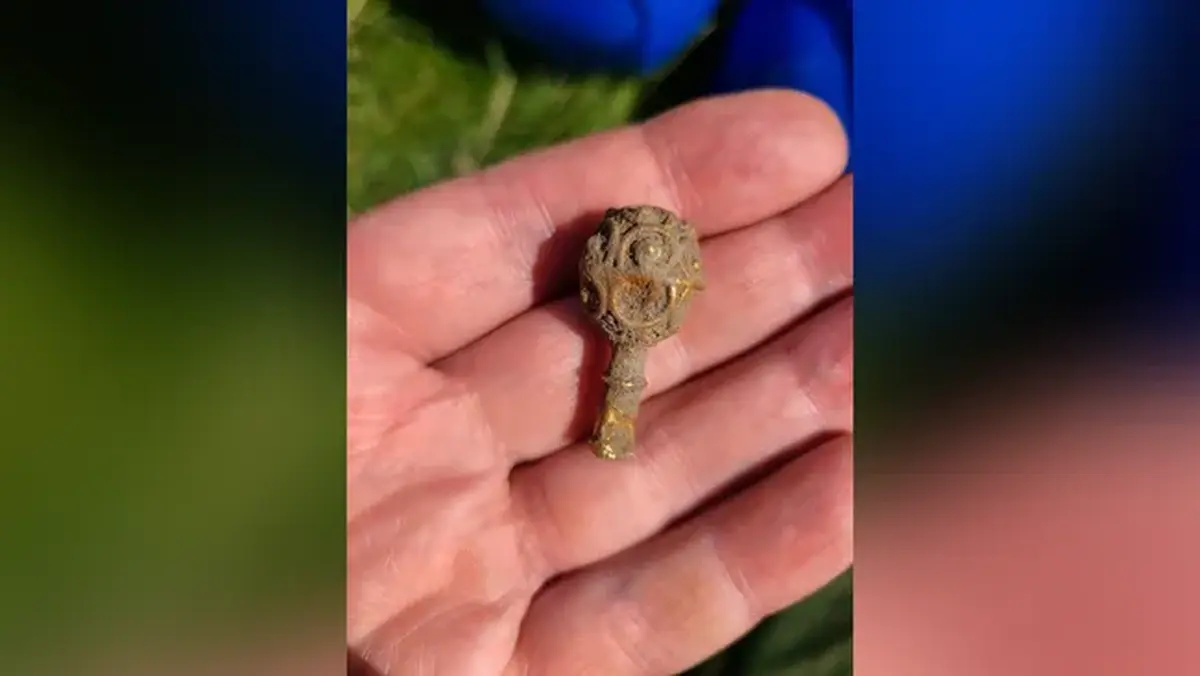 Yara Souza from Orlando, Florida, is currently an archaeology intern at Newcastle University in the UK. During her very first excavation, she stumbled upon a rare medieval gold artifact. The , dating back to the 9th century, had been hidden from archaeologists for many years near a major ancient Roman road in Northumberland.
Yara Souza from Orlando, Florida, is currently an archaeology intern at Newcastle University in the UK. During her very first excavation, she stumbled upon a rare medieval gold artifact. The , dating back to the 9th century, had been hidden from archaeologists for many years near a major ancient Roman road in Northumberland.
“I couldn’t believe I found something so quickly on my very first dig. It was incredible,” the young woman said.
The mysterious object, measuring just 4 centimeters in length, is nearly identical to an artifact discovered in the same area in 2021. That earlier find was identified by experts as a pin with a spherical head, crafted during the early medieval period, around 800-1000 AD, according to Live Science.
Both gold items signify high status. Experts believe these similar artifacts are connected, possibly serving ceremonial or religious purposes rather than merely being accessories.
Tracing the Footsteps of the Past
In the 2nd century, the major ancient Roman road, now known as Dere Street, where both artifacts were found, played a crucial role in transporting goods to the northernmost regions of the empire, including Scotland.
“We know that Dere Street continued to be an important transport artery long after the Romans left,” noted James Gerrard, a professor of Roman archaeology at Newcastle University and the excavation leader. He believes this pair of items was intentionally buried.
Both artifacts are set to undergo thorough analysis as part of the UK’s Antiquities Research Program.
“This project is a fantastic example of how metal detectorists and archaeologists can collaborate to learn more about the history of Northumberland,” said Andrew Agat, the finds coordinator for the northeast of England.

